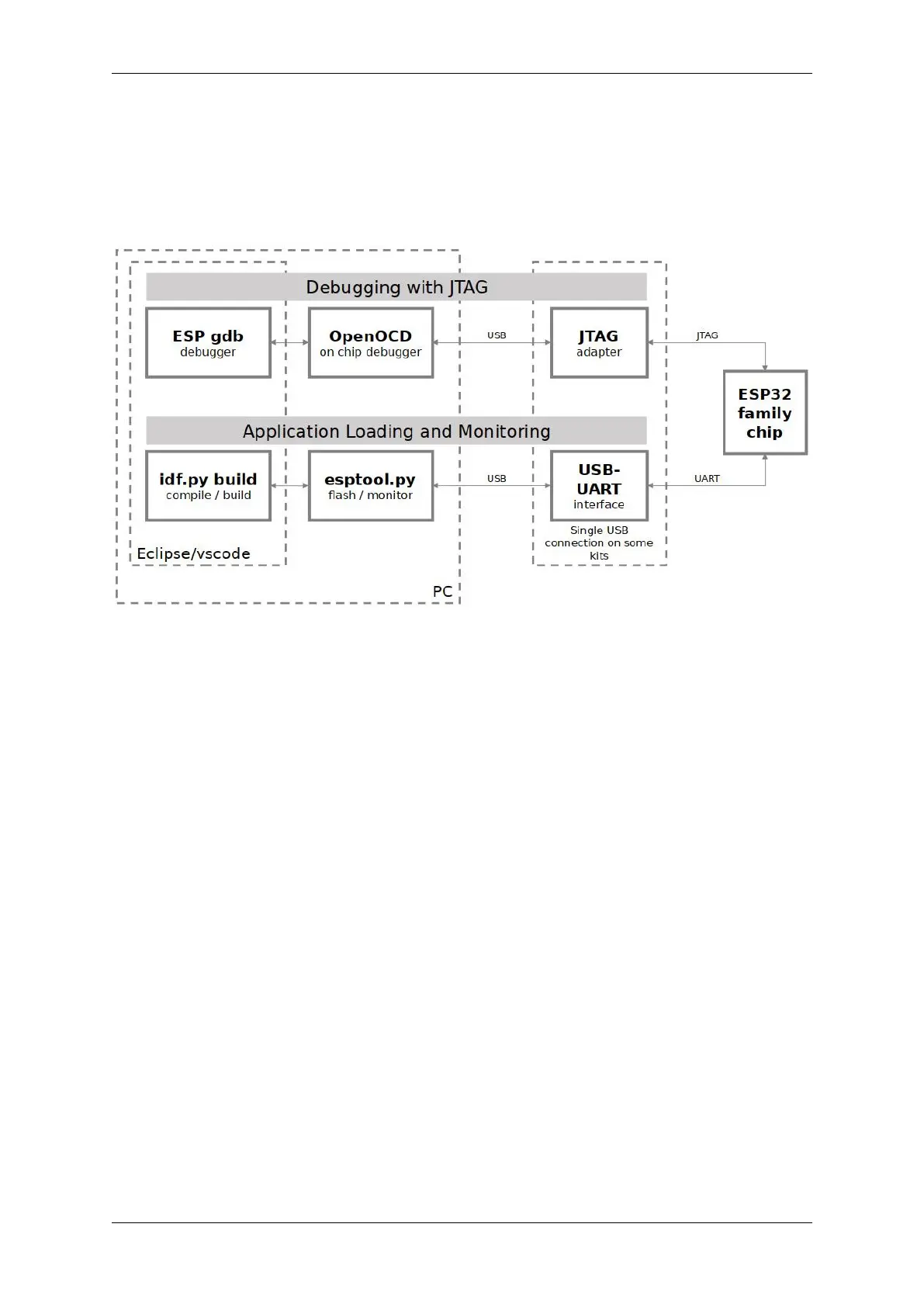Chapter 4. API Guides
4.17.2 How it Works?
The key software and hardware components that perform debugging of ESP32-S2 with OpenOCD over JTAG (Joint
Test Action Group) interface is presented in the diagram below under the “Debugging With JTAG”label. These
components include xtensa-esp32s2-elf-gdb debugger, OpenOCD on chip debugger, and the JTAG adapter connected
to ESP32-S2 target.
Fig. 20: JTAG debugging - overview diagram
Likewise, the“Application Loading and Monitoring”label indicates the key software and hardware components that
allow an application to be compiled, built, and flashed to ESP32-S2, as well as to provide means to monitor diagnostic
messages from ESP32-S2.
“Debugging With JTAG”and “Application Loading and Monitoring”is integrated under the Eclipse IDE in order
to provide a quick and easy transition between writing/compiling/loading/debugging code. The Eclipse IDE (and the
integrated debugging software) is available for Windows, Linux and macOS platforms. Depending on user prefer-
ences, both the debugger and idf.py build can also be used directly from terminal/command line, instead of
Eclipse.
If the ESP32-S2-Kaluga-1 is used, then connection from PC to ESP32-S2 is done effectively with a single USB cable.
This is made possible by the FT2232H chip, which provides two USB channels, one for JTAG and the other for
UART connection.
4.17.3 Selecting JTAG Adapter
The quickest and most convenient way to start with JTAG debugging is by using ESP32-S2-Kaluga-1. Each version of
this development board has JTAG interface already built in. No need for an external JTAG adapter and extra wiring
/ cable to connect JTAG to ESP32-S2. ESP32-S2-Kaluga-1 is using FT2232H JTAG interface operating at 20 MHz
clock speed, which is difficult to achieve with an external adapter.
If you decide to use separate JTAG adapter, look for one that is compatible with both the voltage levels on the
ESP32-S2 as well as with the OpenOCD software. The JTAG port on the ESP32-S2 is an industry-standard JTAG
port which lacks (and does not need) the TRST pin. The JTAG I/O pins all are powered from the VDD_3P3_RTC
pin (which normally would be powered by a 3.3 V rail) so the JTAG adapter needs to be able to work with JTAG
pins in that voltage range.
On the software side, OpenOCD supports a fair amount of JTAG adapters. See http://openocd.org/doc/html/
Debug-Adapter-Hardware.html for an (unfortunately slightly incomplete) list of the adapters OpenOCD works with.
Espressif Systems 1371
Submit Document Feedback
Release v4.4

